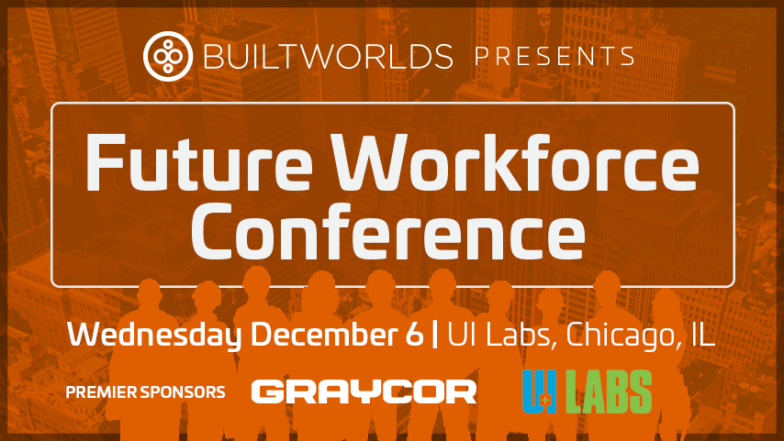
Nicole Friedman, Consultant at Clareo, is a BuiltWorlds contributor.
 We invite experts and thought leaders to share their knowledge on topics related to innovation in the built environment. Information on each contributor can be found at the bottom of each article. Learn more about our contributor program here.
We invite experts and thought leaders to share their knowledge on topics related to innovation in the built environment. Information on each contributor can be found at the bottom of each article. Learn more about our contributor program here.
A recent Economist article noted that the construction industry has remained basically unchanged since the 1960s. That’s incredible to fathom given the transformation society has gone through in just the past ten years. Consider: It was only a decade ago that we didn’t have iPhones. Even more astounding is that productivity in the U.S. construction industry has actually declined 50 percent in the past 20 years.
Although construction has managed to dodge disruption far longer than any other industry, time is running out. Change is hard and most people hate it.

Change brings uncertainty, but most organizations have been structured to reduce risk and uncertainty in how they train their employees and design their processes, creating a culture that prioritizes stability over innovation. So, it’s no surprise that even when companies see an outside threat, the change agent who tries to address it is often attacked by the corporate antibodies. Corporate inertia is the biggest barrier to transformation, but must be overcome to survive.
Companies know they must evolve and change and do it fast enough to stay ahead of their disruptors. That’s easier said than done when you are used to traveling at a tortoise pace, and don’t know where to start.
Companies are complex organizations, and what drives innovation is truly a formula. It’s not one or two magic bullets and it’s not the same formula for every company. And turning a ship takes time, so knowing you are at least headed in the right direction and making progress is important…but how is it done?
Based on our work at Clareo helping corporations innovate and grow, especially big industrials who haven’t innovated in decades, we have some advice for firms looking to get started:
1. Focus on the foundation
A great vision and strategy will fail in the wrong environment. Leveraging our experience coupled with our research on innovative organizations, we’ve identified the factors most correlated with innovative companies. Companies looking to create an environment that drives ongoing innovation should focus on these six things:
- Leadership: Is the vision clear, is it designed to promote innovation and is it actively supported?
- Organization: Is the way we organize for innovation effective?
- Learning: Does the company learn by capturing and harvesting insights?
- Processes: Do the processes in the company encourage or deter innovation?
- Capabilities: Do we possess the necessary capabilities to innovate successfully?
- Culture: Is the company culture conducive to innovative thought and action?
2. Assess performance
Develop a baseline understanding of where you stand in each of these dimensions through employee feedback, such as an organization-wide survey.
Too often leadership believes they have the right things in place, but we often find a disconnect with intentions at the top and reality of those on the front lines, executing on a daily basis. It’s good to look across the organization to assess performance but also compare viewpoints at different levels of the organization, across function areas and business units.
Although still a collection of opinions, in aggregate, they serve as powerful guideposts to help prioritize areas of need. Organizations are a manifestation of its people and their perspectives. Asking those employees what is and is not important in the context of the company is the best way to get a read on what drives that organization.
3. Identify priorities

Don’t try to do it all at once. Identify a few areas of focus based on where the biggest deficits or opportunities exist. Agree upon a set of criteria that is used to prioritize one initiative over another.
4. Create initiatives
Develop the programs, processes, tools, etc. to address the priority areas. In thinking through the rollout, ensure you have thought through a communication and engagement plan. A well-intentioned plan will fail without the proper awareness and support from senior leadership and buy-in throughout the organization. Most people are naturally averse to change, or just have ingrained habits.
Consider how to incentivize participation. Knowing the initiatives are important to senior leadership is one way to motivate engagement. Tying engagement / behavior change to employee evaluations or encouraging participation through gamification techniques are other useful methods.
5. Measure over time
It’s hard to improve what you can’t measure. Knowing the qualities found in the most innovative companies is helpful, but transforming a company, particularly a well-established one, requires a disciplined approach and time. Too often companies attempting innovation initiatives either focus on the wrong things or abandon their efforts after only a short time, because it’s been hard to measure progress. Repeat the survey annually to check progress in your priority areas.
Being a laggard when it comes to transformation has its perks. You can learn from the mistakes of others before you. In the face of disruption, long established firms feeling intense pressure to just try something — anything — to make progress, have been frustrated with the results.
Without starting this journey in a disciplined manner, one that establishes baselines and mechanisms for tracking, companies have wasted time with a trial and error approach that does not help them learn and adapt, resulting in the wrong things getting prioritized. Radical efficiency and focus are critical, and this framework (Clareo’s Innovation Assessment) provides companies with a roadmap for change.
About the author:
Nicole Friedman is a consultant for Clareo, a strategy consulting firm dedicated to helping leaders create new ways to grow. Our work in organizational design helps companies improve along six dimensions that we’ve found drive innovation: leadership. processes, culture, organization, learning, and capabilities. Work in this area has spanned a range of companies including B2B, CPG, and industrial.
Our offerings include the Innovation Assessment, a cloud-based software tool consisting of a 48-question interactive survey that measures an organization’s capacity to drive innovation performance based on the six dimensions. It enables executives to clarify the real challenges a company is facing related to innovation, generate actionable ways to address them, and measure results.
For more on the Innovation Assessment, contact the author at nfriedman@clareo.com.

Discussion
Be the first to leave a comment.
You must be a member of the BuiltWorlds community to join the discussion.